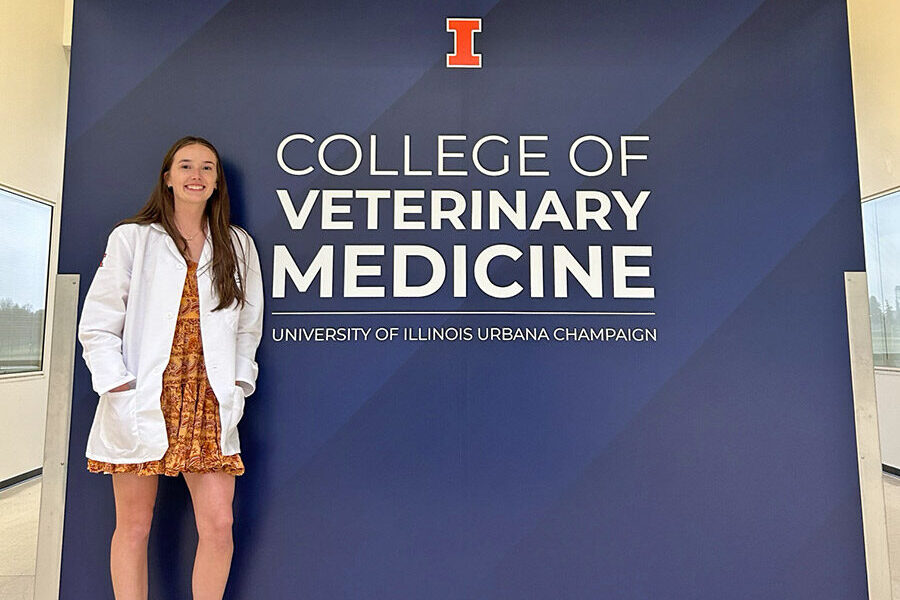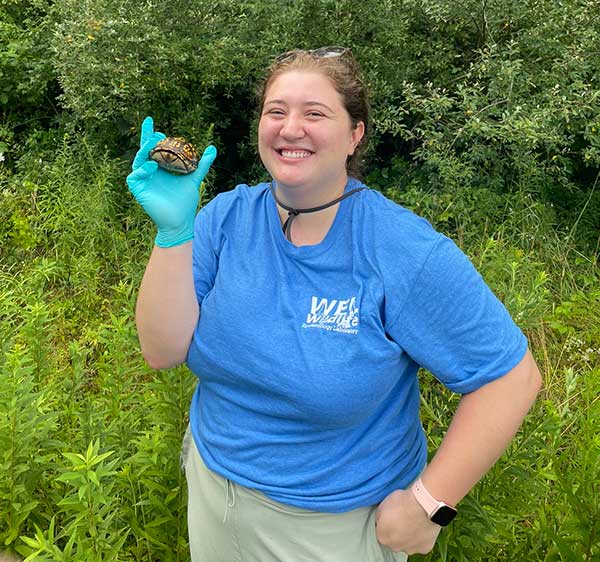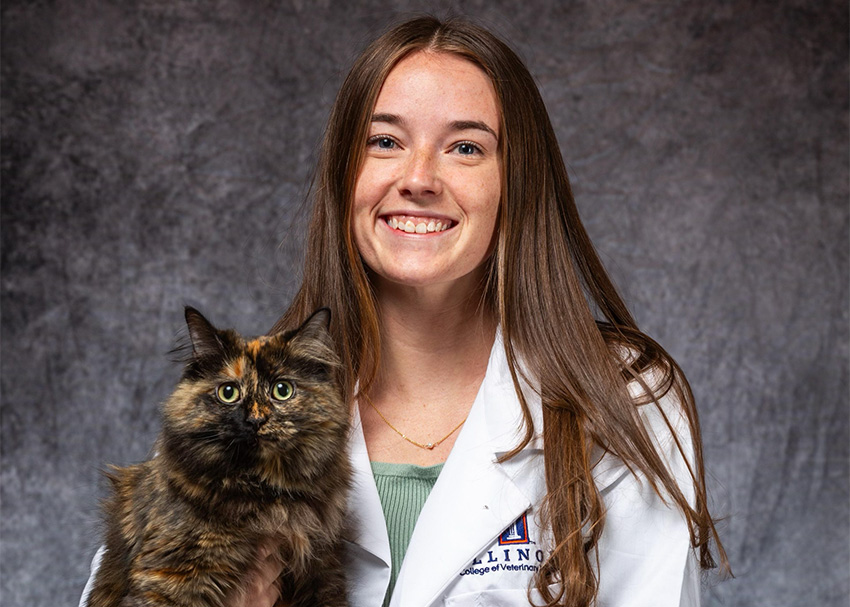‘Thank you for the learning, friendship’
When we’re young we learn the alphabet. I remember dressing up as the letter “Z” for the alphabet parade in kindergarten, parading around my elementary school with zippers glued to my t-shirt.
![[Sarah Wright in four hospital settings]](https://vetmed.illinois.edu/wp-content/uploads/2021/04/vthcomposite.jpg)
Block A I had Diagnostic Medicine, which was four weeks long and went through Block B. I remember being nervous and anxious for my first weeks as a clinical year student. Block C, when I had Ophthalmology, was my first true “clinical” rotation. It was the first time I interacted with clients, and the first time I performed physical exams by myself. Block F I had Internal Medicine. I was presented with puzzling cases and spent long hours at the hospital, and I understood the skills and confidence I needed to develop to become a great doctor.
‘Comfortable in the Role of Doctor’
I didn’t truly become comfortable in clinics, and in the role of the doctor, until Block K, Emergency Medicine (ER). During this block, I became comfortable with triaging patients. I began to realize which patients needed urgent attention, which ones were stable, and which ones needed further investigation.
The end of our journey may not have been what we expected, but neither is the day-to-day work of a veterinarian. We are entering this profession … equipped with knowledge of public health and epidemiology and the training to practice evidence-based medicine when the world needs just that.
Sarah Wright, Class of 2020
![[Sarah Wright on aquatics externships]](https://vetmed.illinois.edu/wp-content/uploads/2021/04/SarahWrightComposite.jpg)
Through my in-house rotations at the Veterinary Teaching Hospital, I learned how to become a doctor. I was able to apply these skills and continue to grow during my 16 weeks of externship time at the John G. Shedd Aquarium, the Chicago Zoological Society’s Brookfield Zoo, Mystic Aquarium, and The Marine Mammal Center.
‘Uncertainty, Anxiety, and Confusion’
The last letter of the alphabet holds a lot of meaning for me, and not just because I was “Z” back in the kindergarten alphabet parade. Z is the last block of clinical rotations. It is the light at the end of the tunnel for a veterinary student, the capstone two weeks of a professional education spanning four years (not including four years of undergrad prior).
This year, Block Z brought emotions other than excitement for the future. It brought uncertainty, anxiety, and confusion with the COVID-19 pandemic. We learned that our in-person learning at the Veterinary Teaching Hospital would be cut short, and that, understandably, we would not have the Awards and Scholarships Celebration, Senior Banquet, or the in-person graduation ceremony that we worked hard for.
It’s difficult to put these emotions into words. I was participating in an externship in Northern California at the time, and I realized I may not see my classmates in person for a very long time. We would not be able to celebrate our greatest triumph together, nor talk about how excited we were for our future and for entering the “real world” at the end of May.
‘We Adapted’
However, being in the veterinary profession, you learn to adapt early on. Similar to my ER rotation, where I saw a dog in critical condition one hour and a healthy new guinea pig the next, adapting, keeping calm, and putting on a brave face during an adverse situation is what veterinarians are trained to do. And that’s what we did. We adapted.
We have been participating in our last six weeks of veterinary school, termed “Professional Development,” virtually, and we will have a virtual graduation ceremony on May 16.
The end of our journey may not have been what we expected, but neither is the day-to-day work of a veterinarian. We are entering this profession during an uncertain time, but we are equipped with knowledge of public health and epidemiology and the training to practice evidence-based medicine in a time when the world needs just that.
I may not be able to say this in-person to my classmates or to my professors and mentors, but thank you. Thank you for the past four years, thank you for the learning, guidance, support, and friendship, and thank you for the foundation for a successful and rewarding career.

![[Sarah Wright at an aquarium]](https://vetmed.illinois.edu/wp-content/uploads/2021/04/final-blog-feature.jpg)


